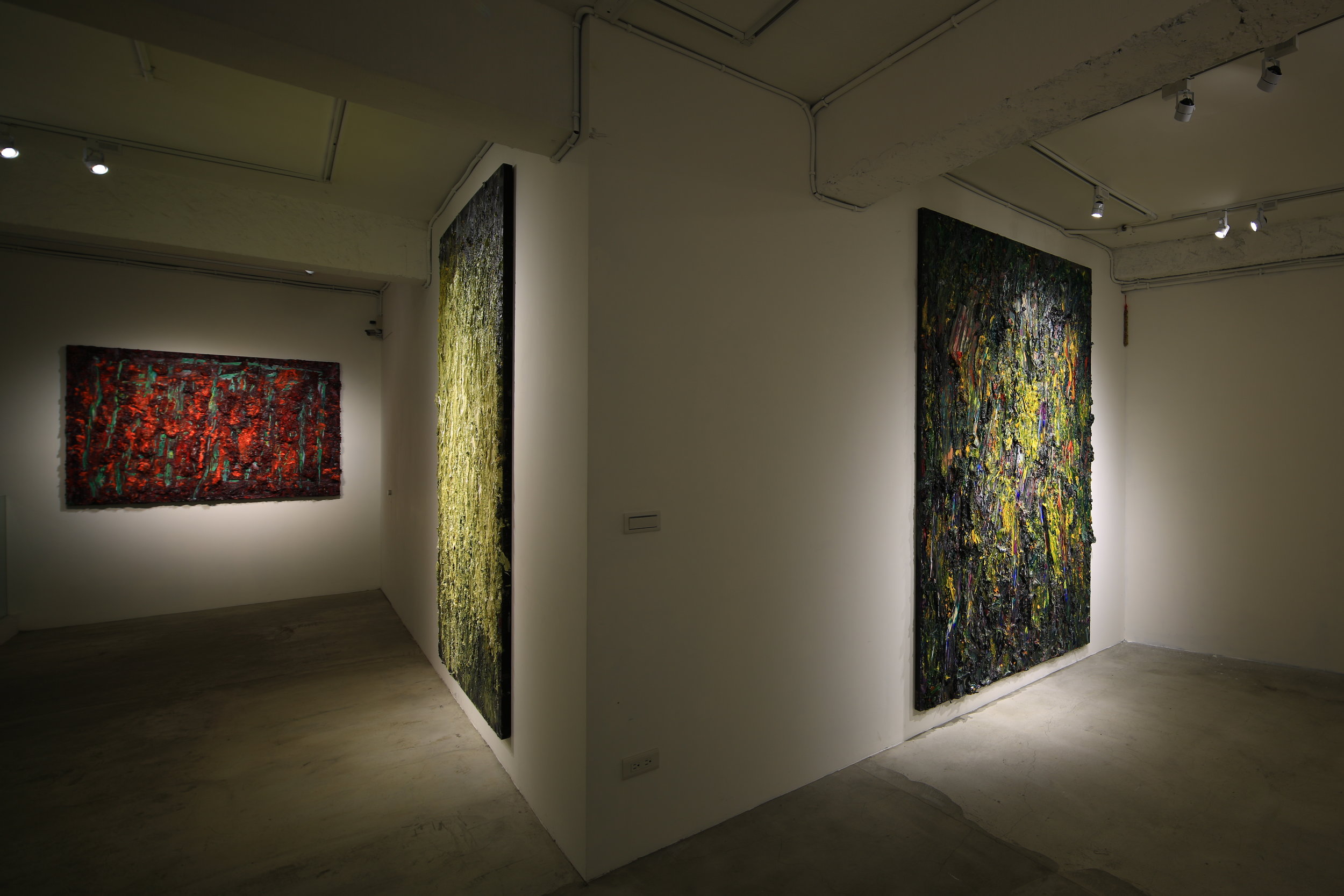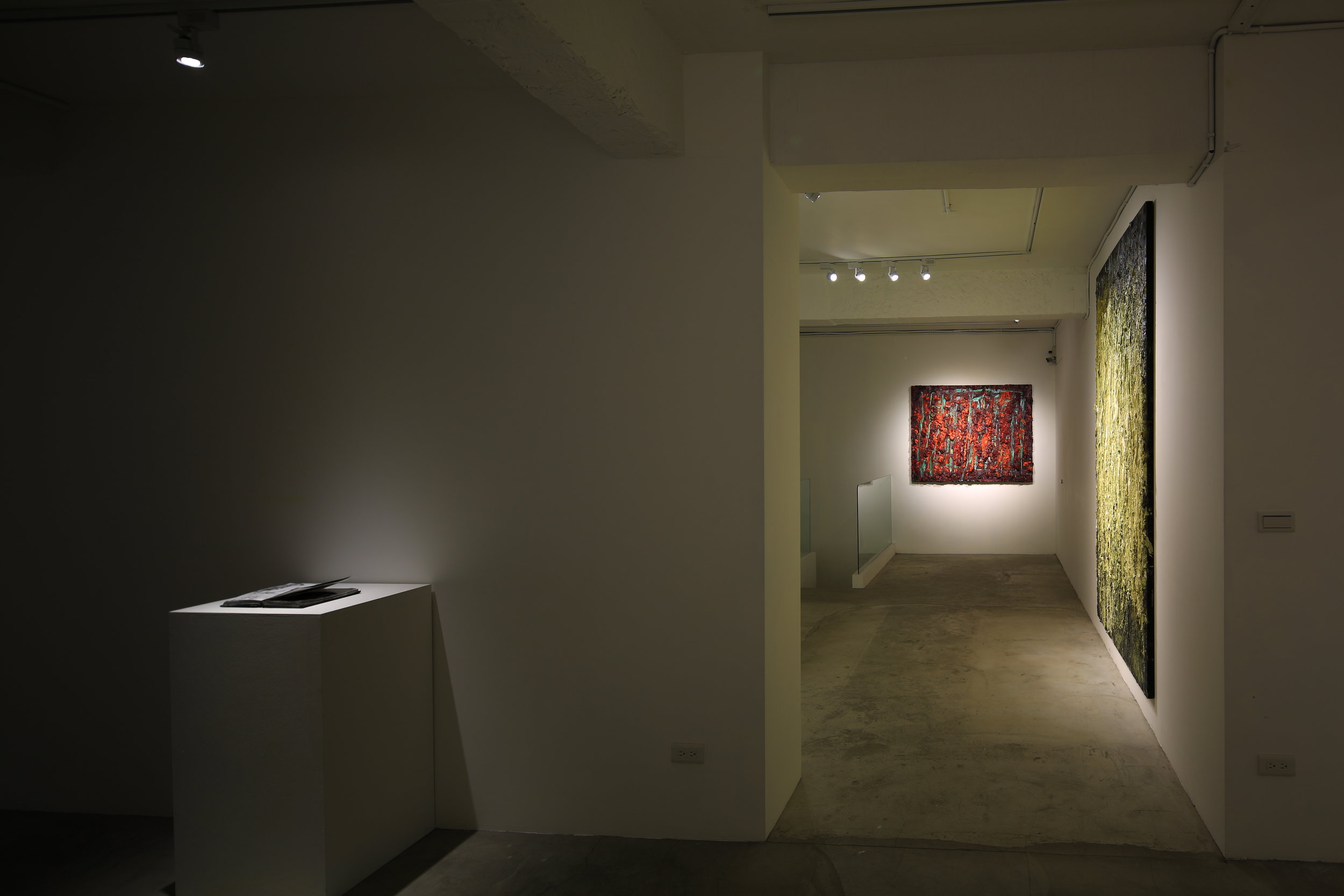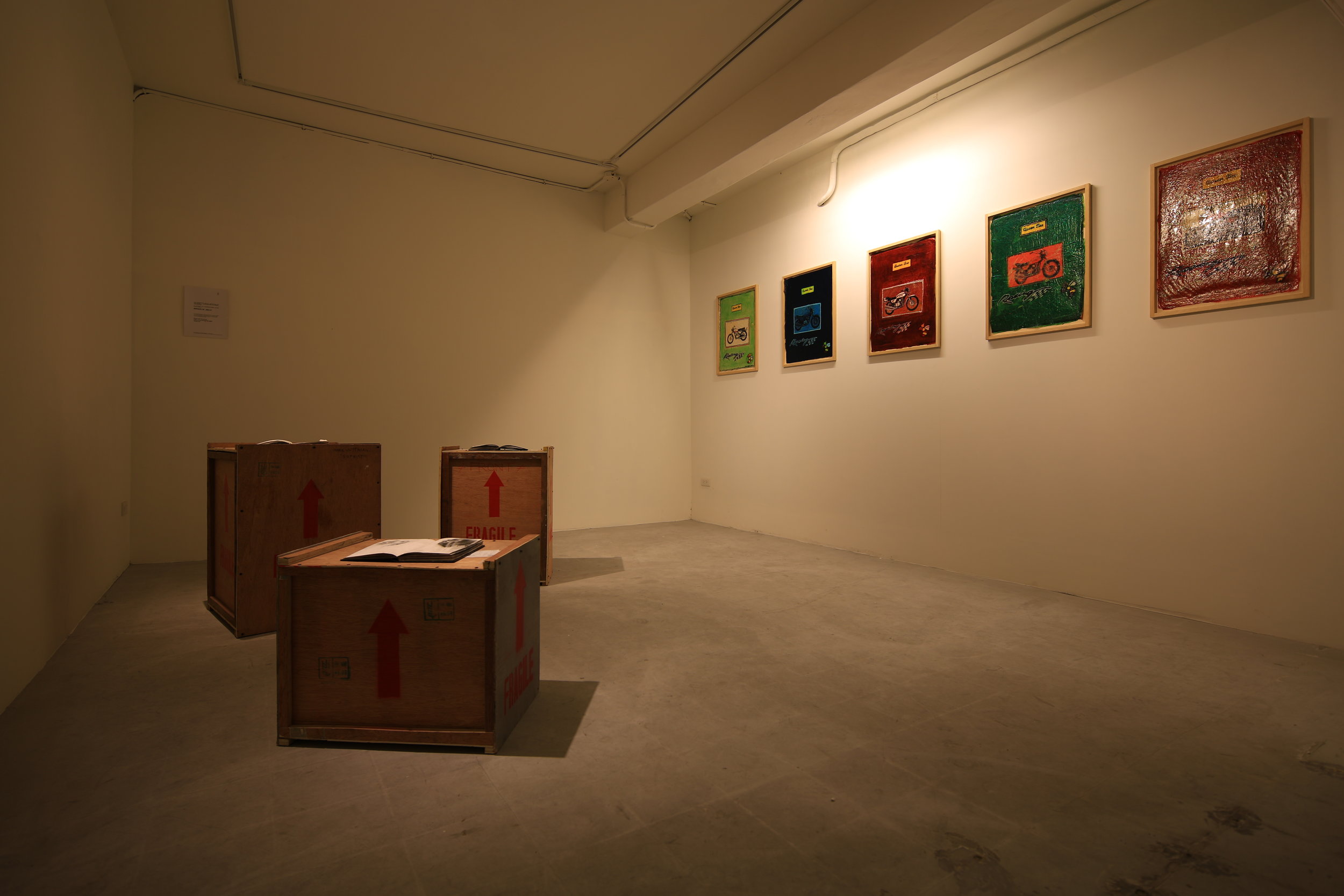Rodney Dickson: Painting




How do you define success? How important is the matrix of nature and nurture that you were born with? Can willpower make you an artist? Would you be different- would you still be an artist- if you had stayed at home? Rodney Dickson lives in Brooklyn, New York. He can support himself by his art. Within the past ten years he has had sixteen solo painting exhibitions, including two in Tokyo and three in Saigon; fourteen “Happenings”, including ones in Mexico City, Rangoon, Hanoi, Beijing, New York, Belfast, Miami and Los Angeles; six Installations, all in New York; taken part in forty-six group exhibitions around the world; participated in two residencies, one in China, the other in Vietnam; organized eight workshops in Burma, Vietnam and New York; and had nine funding awards. All of this, literally, seems a world away from the boy who born in Bangor in 1956 and brought up, during the Troubles, in Newtownards, Northern Ireland.
He lived there until he was twenty-three. Both parents were school teachers. Neither had an interest in art and “the possibility of becoming an artist was just not on the horizon. People I knew became motor mechanics, carpenters, and factory workers and if they did well at school they could be a teacher” Liking to draw, he drew what he liked: motorcycles; and he still draws and paints them. Come 1979 his mother suggested he apply for art school as it seemed to be “the only thing I had at least some interest in.” She arranged interviews, and he was accepted for Liverpool Polytechnic. There he was establishment, the Liverpool art school was liberal, enlightened and progressive, the Head of Fine Art being Jeff Nuttall, author, painter, and Performance Artist. Dickson’s interests at the time included Karel Appel and Outsider Art, but his biggest influence was his painting teacher Mike Knowles, now a long-time friend, who described him in his early years as “inarticulate…frustrated by his inability to express himself” and “lacking any obvious facility, but to me he seemed to have exceptional determination, a fierce appetite for art and even then I was confident that he would go on to make interesting, perhaps exceptional work. He was a powerhouse in the Fine Art Department, disruptive, often drunk, contemptuous of timewasters, always pushing himself, self-critical but positive, a splendidly difficult and worthwhile student”
If the inarticulacy and the disruptive awkwardnesses of youth have disappeared, the frustration, the anger and the aggression, some of it perhaps imbibed from Northern Ireland, still fuel his art. He saw himself as an outsider coming from “the narrow-mindedness of a small, enclosed society exaggerated by the effects of the conflict”, a place that gave him “a critical view of the establishment and made me think of the hypocrisy of the state and society” Not surprisingly perhaps, after watching the film Apocalypse Now, he developed an interest in the Vietnam War, and produced a large body of anti-war art, some of which related back to Northern Ireland.
Having graduated from Liverpool in 1983, he was taken on by commercial gallery in Liverpool, although he moved to Amsterdam to live. He built up a network of contacts in the UK, showed at the Arts Council Gallery in Belfast in 1985, moved to Devon in England, and by 1992 was in New York on the PS1 program. The city he “did not entirely like at that time. The people I found to be too aggressive, the society was too complex, it was too expensive and most artists struggled to find time and money to concentrate on making art, as just living took up so much time and energy” He returned to Liverpool but found it small, boring and limiting “after getting a glimpse of the bigger picture in New York.” Being a risk-taker, he returned to live in New York, permanently, in 1997 “It was very difficult to get settled in and find some means of survival. Stepping off a plane with one suitcase in my hand and a few dollars in my wallet was most difficult” He and his wife did construction jobs- physical labor, and as for the art world, “career-wise I knew almost no one” But New York is a place of opportunity.
Dickson participated for years in scores of small-scale “local” shows with friends and acquaintances in studios and alternative spaces, often artist-run. “The feedback is slow and small but I guess that with a lot of time and energy the name does get out and it was a foundation to build on” As he puts it, there may be little financial reward but the work evolves “through showing a lot, getting a sense of something in the air, and putting up your works in the public realm and seeing how it looks.”
Dickson, through contacts he met in New York, has travelled widely in Asia. If the School of London, and in particular Frank Auerbach and Leon Kossoff, would seem to have left the strongest imprints on the artist (along with overlays of Outsider Art, Art Informel, the Cobra group, van Gogh, and almost contemporaries like Milton Resnick and Eugene LeRoy, both of whom have a thickly cauled abstract expressionist surface), the imprints have been fused progressively with Asian ones. The prominent New York gallery owner David McKee who has known the artist’s work for over twenty years (the artist met him when he came over on the PS1 fellowship) and who is a major collector or his work, considers that “the landscape of Vietnam had a profound effect. Suddenly colours such as yellows, greens, reds and whites appeared and the more he fell in love with Asia the more abstract the work appeared. Now the paintings are almost abstractly organic, revelations of colour revealing the beauty of the land and the optimism of the people. Yet occasionally there will be grim reminds of tragedy when a series appears of dark earth colours with tracks of blood red seeping through with masterful strokes. His painterly authority and passion is stamped on every picture”
If the early work, which McKee describes as “the attempt to fuse sad figurative subjects in dark, moody expressionist fields” (incidentally a fine description of his 1985 Arts Council show) was not only directly figurative, often politically orientated, and formally inclined towards collage and mixed-media, the later work is abstract, through based on memories of people and places. In relation to the former, the art critic and editor Richard Vine, speaking of the work related to Asian stereotypes and the Vietnam War, found them “visually energized, intriguing and (intentionally) disturbing. One could not easily tell where the artist stood in relation to the racial, cultural, and nationalistic issues he had stirred. That ambiguity spoke to me- as something more essentially truthful than the politically correct stance one so often and so predictably encounters”
The later work Vine sees as being “in the Abstract Expressionist vein, but brooding, troubled, and troubling to an exceptional degree” When asked if he considered the work to be formalist he remarked that “of course these new works also have a formal element-the incredibly thick, obsessively built-up paint surface- that links them to Art Informel and notions of the abject. Call it Sumptuous Abjection, maybe. Or the Abject Sublime”
In some senses, the division between abstract and figurative does not apply to the artist. He attends a three-hour life-drawing class every week, and also tends to produce what one might call working diagrams in relation to his paintings. For over twenty years he has produced videos and Happenings. Perhaps another way of looking at him is to say that to a European eye the journey seems to have been from a relatively straightforward albeit abstracted figuration based on collage and mixed-media techniques to a much denser, darker and more formalist version of abstract expressionism, which nevertheless looks very European. Whereas to an American eye like that of Richard Vine he seems very much to be an American painter. What everyone agrees upon is that there is a caginess, a muscularity, an edginess in the paintings, and in the most recent eight-foot by five works, a sense of larger-than-life scale, as if these were works to be walked into: not so much a door into the dark as a cauldron which might, or might not, lead into the unknown.
